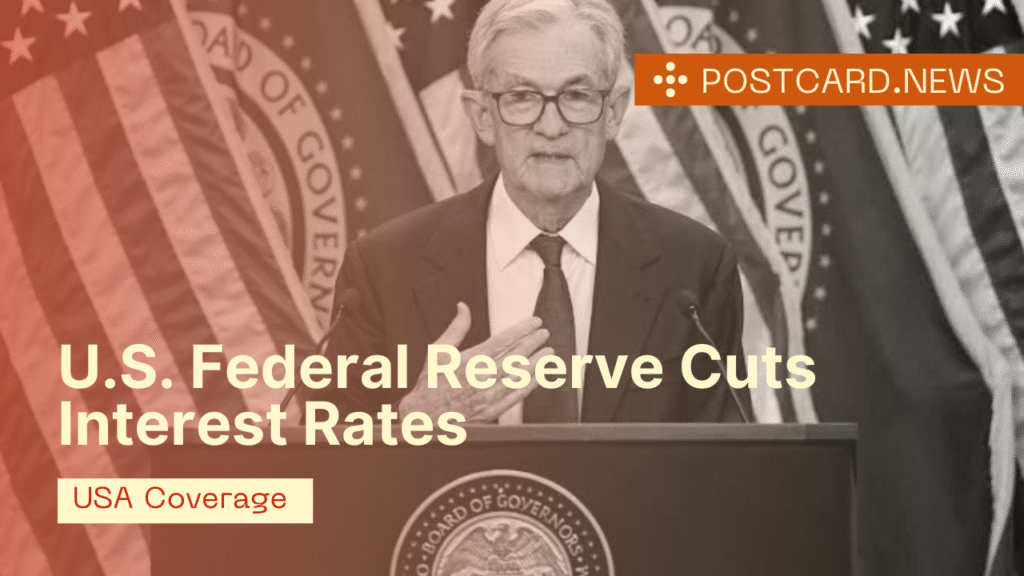The U.S. Federal Reserve has reduced its key interest rate by 25 basis points, bringing the federal funds rate down to a range of 4.00%–4.25%. This marks the Fed’s first rate cut of 2025 and signals a cautious shift toward supporting growth amid a cooling economy.

Why the Fed Cut Rates
The Fed said its decision was influenced by a slowing labor market and signs of weaker economic activity.
- Job creation has eased in recent months.
- Unemployment has inched upward.
- Growth indicators point to softer demand.
At the same time, inflation remains above the 2% target, but policymakers believe easing borrowing costs is necessary to balance risks between inflation and rising unemployment.
What the Fed Announced
- Interest rates lowered from 4.25%–4.50% to 4.00%–4.25%.
- Two more quarter-point cuts are likely before the end of 2025, if conditions warrant.
- Fed Governor Stephen I. Miran dissented, favoring a larger 50 basis point cut to provide stronger support for the economy.
Market and Banking Response
- Major U.S. banks immediately reduced their prime lending rates, which directly affect credit card, loan, and mortgage costs.
- Stock markets reacted positively, with gains across U.S. and global exchanges.
- Bond yields adjusted lower as investors priced in additional cuts later this year.
What This Means for Consumers
- Borrowers: Expect gradual relief in loan EMIs, credit card interest, and mortgage payments.
- Savers: Deposit rates and fixed-income yields may decline.
- Businesses: Cheaper credit could support investment in housing, durable goods, and expansion.
Looking Ahead
The Fed has two more meetings in October and December 2025. Analysts expect further cuts if:
- The labor market continues to weaken, or
- Inflation shows steady decline toward the 2% target.
However, the central bank emphasized its data-driven approach, balancing risks of high inflation with the need to sustain employment.
The Bigger Picture
This rate cut marks a significant policy shift after a year of holding rates steady. While it offers relief to borrowers, the move underscores concerns that the U.S. economy may be slowing more than expected.
The Fed’s next steps will depend on upcoming jobs data, inflation trends, and global market conditions, making the final quarter of 2025 crucial for economic outlook.

